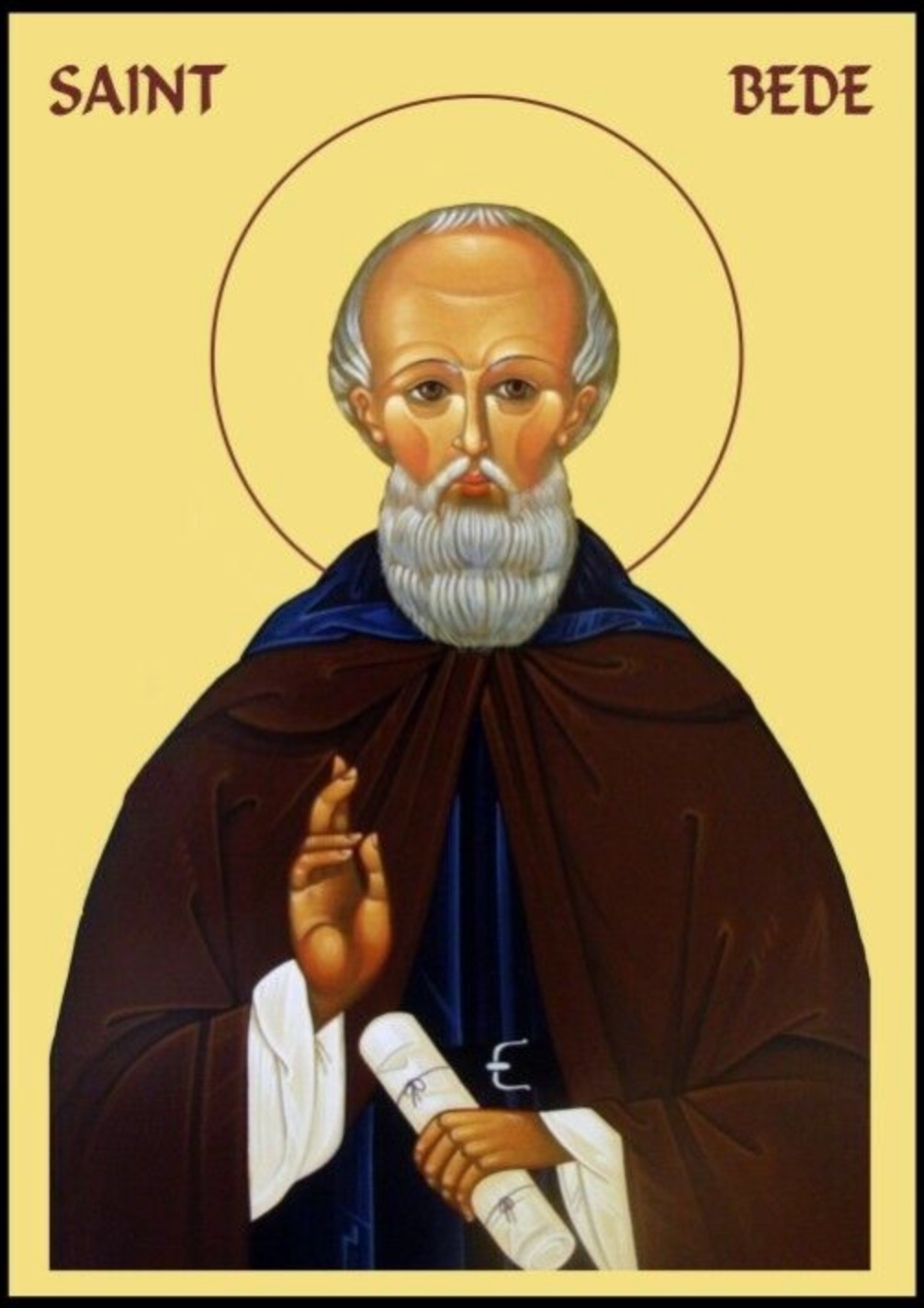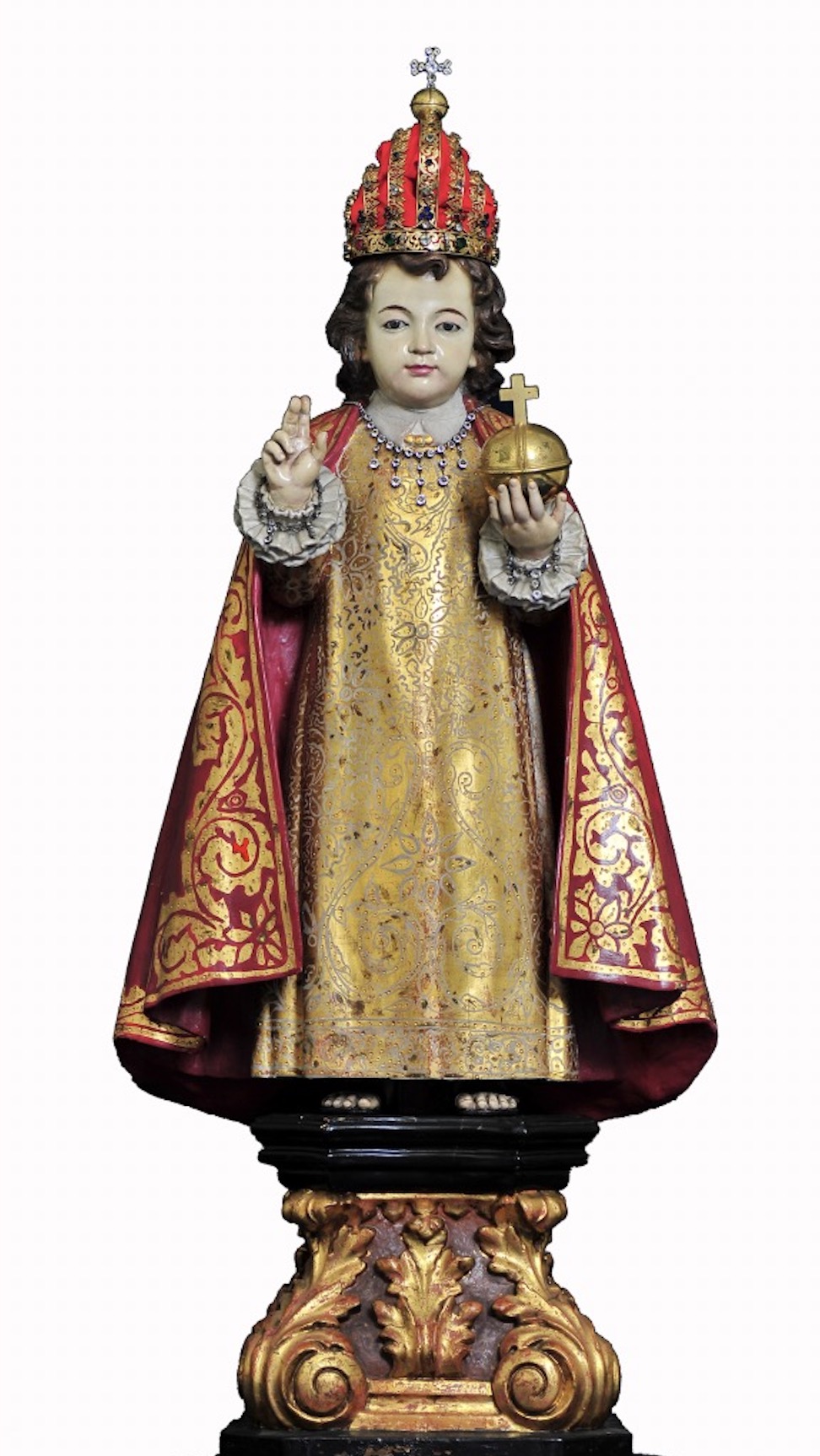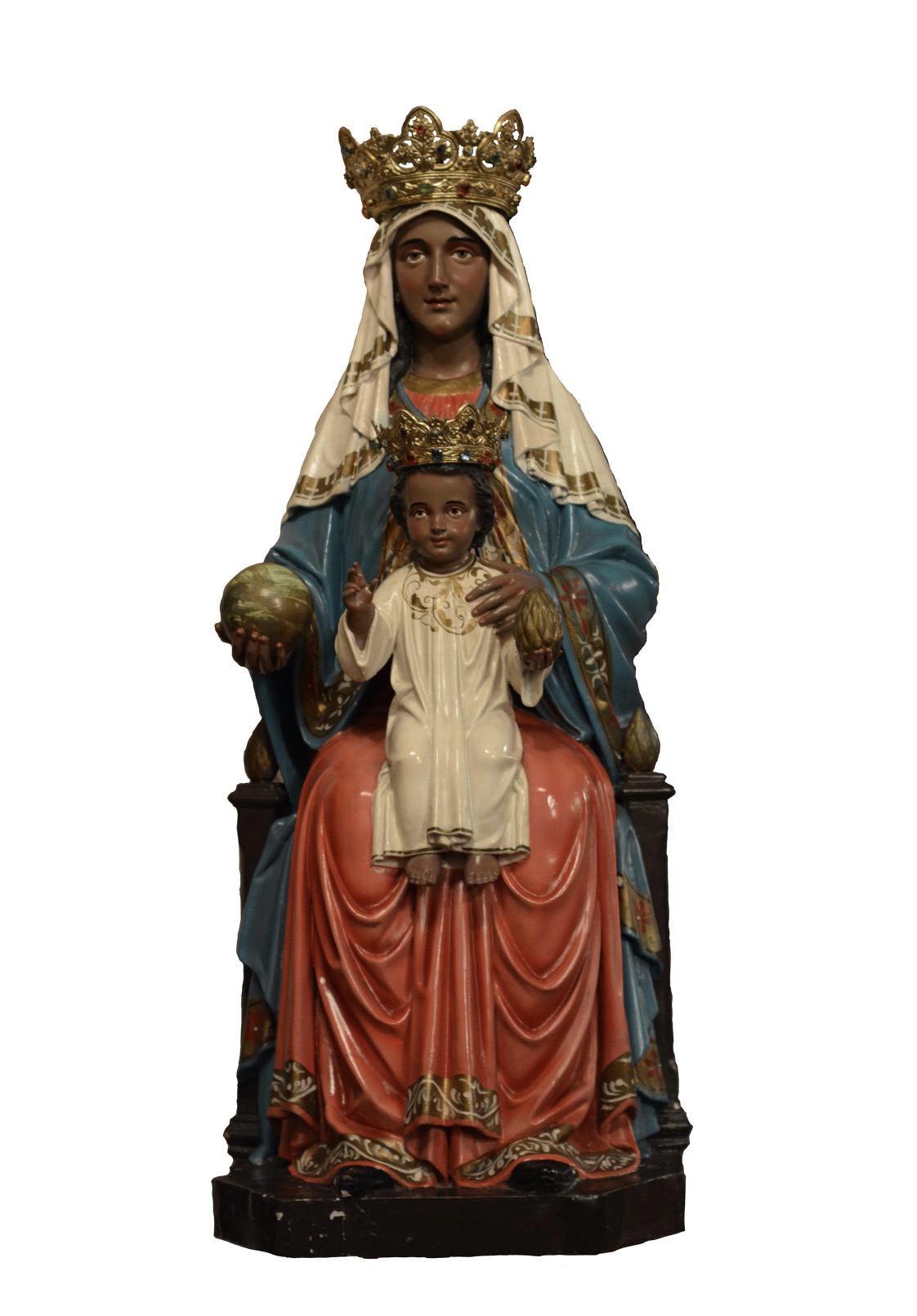Benedictine Mission and Identity Office
The BMIO upholds the practice of Benedictine values and promotes Bedan culture.
The office explains the Vision, Mission, and Identity of San Beda and the Hallmarks of Benedictine Education to weave together the minds and hearts of the community.
Directly under the supervision and guidance of the Rector-President, it was created in 2013 to respond to the growth in the number of faculty and students, and the broadening diversity of their backgrounds: wider age range, more females, influence of previous schools’ formation, and varied interests.
The transfer of the Basic Education Department to the Rizal campus resulted in the interruption of the century-long tradition of the Bedan formation continuum from prep to grade school to high school to college.
New departments were also introduced. The Graduate School of Business opened in 2001. It was followed in 2002 by the Graduate School of Liturgy and College of Medicine. The College of Nursing started in 2003. In 2004, the Graduate School of Law was inaugurated. Additional courses are expected in the pipeline.
The government mandated K-12 program, extending basic education by two more years, was implemented in both the Rizal and Manila campuses in AY 2016-17. This further increased the number of students and faculty, and further diversified the community.
Through various media – print, digital, live presentations – the BMIO aims to move the members of the community from simple awareness to understanding to acceptance then eventually the practice of the Benedictine values of the Bedan community.
St. BenedictSaint Benedict (480-547) was born in the district of Nursia (present-day Norcia), in Umbria, central Italy. He is regarded as the “Father of Western Monasticism” and is “Co-patron of Europe” along with Saints Cyril and Methodius. As a young man, Benedict was sent to Rome for studies but left after a short stay, desiring to dedicate his life to God. He went to live in an isolated place near Subiaco, not far from the ruins of Emperor Nero’s summer villa, about fifty miles from Rome. Today the cave is the celebrated shrine called “Sacro Speco” (The Holy Cave) and is one of Europe’s most beautiful sanctuaries. At Subiaco, Benedict lived a life of solitude and prayer for about three years with support from a monk named Romanus. Benedict’s time as a hermit was interrupted for a short period when he became the superior of a group of unruly monks. Ultimately unhappy with his guidance, they tried to poison him. His survival is attributed to the Hand of God. He then withdrew to the cave at Subiaco once again. Eventually, Benedict’s sanctity attracted disciples and in time, twelve small monasteries were established around Subiaco, with Benedict as the spiritual father of them all. | |
Around the year 530, Benedict left Subiaco with some of his disciples headed for Monte Cassino, halfway between Rome and Naples, where he began a single, close-knit community on a mountain top. There he remained until his death around the year 547. It was at Monte Cassino that Benedict completed his “Rule for Monks,” basing it on earlier monastic literature as well as his own original material. Today, the “Rule of Saint Benedict,” as it is commonly called, is considered one of the most important factors in the development of Christian Europe. In time, the Rule became the norm for all monks and nuns in the West. During his lifetime, the monastery at Monte Cassino grew and a foundation was made south of Rome, at Terracina. The monasteries at Subiaco continued as well. Benedict had a sister, Scholastica, who was consecrated to God from her youth and died shortly before her saintly brother. Both of them were buried at Monte Cassino in the oratory dedicated to Saint John the Baptist. Saint Scholastica’s feast day is on February 10th and Saint Benedict’s is on March 21st and July 11th. The March date is generally considered to be the date on which he died. The life of Saint Benedict is found in “The Dialogues” written by Pope St. Gregory the Great some forty years after Benedict’s death. It is not a biography as we know the genre today, but the details supply us with a basic outline of the life and times of Saint Benedict. Among the titles given to Saint Benedict over the centuries are the following: “Messenger of Peace, Architect of Unity, Teacher of Culture and Civilization, Father of Western Monasticism, Herald of the Christian Faith, and Father of the Whole of Europe.” Today, Benedict’s disciples, both men and women, can be found on every inhabited continent of the world, leading lives dedicated to “Prayer and Work,” as Holy Father Benedict taught in his rule and by his life. San Beda University celebrates the Solemnity of St. Benedict on July 11. | |
 | St. BedeSaints are extraordinary people, but some of them led very ordinary lives. One saint who led what we could consider an ordinary, uneventful, and, for most people, an unattractive life was St. Bede. He was born in the year 673 in England. For 56 years he lived in a monastery, and as we all know, that kind of life can be quite uneventful. There was nothing exciting, dramatic, or spectacular about his life. No miracles were attributed to him during his lifetime. Nothing tells us that he was a mystic, a dynamic leader, or a fiery preacher. From what we know about him, he was not involved in any controversy. He rarely left his monastery and when he did, he did not travel very far. His life was governed by the routine of the monastery – by the unchanging schedule of prayer, work, and study, and by the demands of the common life. Of himself, St. Bede wrote, “I was born on the lands of this monastery, and on reaching seven years of age, I was entrusted by my family first to the most reverend Abbot Benedict and later to Abbot Ceolfrid for my education. I have spent all the remainder of my life in this monastery and devoted myself entirely to the study of the Scriptures. And while I have observed the regular discipline and sung the choir offices daily in church, my chief delight has always been in study, teaching, and writing.” |
Toward the end of his life, he became ill and although his breathing became labored, he continued praying and writing. During his last moments, he dictated the final chapter of a book, and when he had finished the last sentence he said, “Glory be to the Father and to the Son and to the Holy Spirit.” Upon naming the Holy Spirit he breathed his last. One could say that because of its regularity, simplicity, and predictability, St. Bede’s life was ordinary. But he was in fact an extraordinary man. Because of his love for study, teaching and writing, he became the most learned man of his time. He wrote books on natural science, history, grammar, poetry, music, and theology. His best known book is A History of the English Church and People, the first written history of England. This work covers a period of about 800 years, starting with an account of Julius Caesar’s attempt to conquer Britain and ending with events in the year 731. The greater volume of St. Bede’s writings consists of commentaries on Scripture, about 60 books. Though he worked with all humility and modesty, keeping a low profile, St. Bede’s writings became known outside his monastery during his lifetime. The Anglo-Saxon missionaries used his commentaries on Scripture in their preaching. On learning of St. Bede’s death, his contemporary, St. Boniface, the English monk who evangelized Germany, wrote, “The candle of the Church, lit by the Holy Spirit, was extinguished.” St. Bede was extraordinary, not only for his scholarship and large output, but especially for his sanctity. A disciple’s account of his death portrays St. Bede as gentle, affectionate, and generous, a man filled with love for God and his fellow human beings, a man of faith and prayer. Within 50 years after his death, his cult as a saint was established. Miraculous cures were attributed to his relics. As a monk and priest, as a teacher, scholar, historian, and theologian, St. Bede fulfilled the Lord’s call to be the salt of the earth and light of the world. Like salt that is dissolved in the mixture it seasons, St. Bede was, so to speak, the little thing that made the big difference. Like the lamp in the house and the city on a hill, he brought light into the darkness of his time. | |
 | Sto. Niño de PragaThe Abbey Church was dedicated to the Holy Infant of Prague when it was consecrated in 1926. The image of the Holy Infant sculpted in 1905 was installed above the Abbatial throne of the altar. Since then, the devotion to the Holy Infant of Prague has become part of the tradition of San Beda University. The annual triduum-novena and procession during the last weekend of January are religious activities anticipated not only by the members of the Bedan community but also by devotees of the Holy Infant all over Metro Manila. The devotion to the Holy Infant of Prague has its origins in the latter part of the Thirty Years War which ravaged Europe from 1618 to 1648. The war broke out as a result of the claim of Frederick the Elector Palatine to the throne of Bohemia, which is now Czechoslovakia. It was a religious war involving the German Protestant and Catholic princes at the start, and later, Sweden, Denmark, Spain, France, Italy, and the Netherlands. Against the backdrop of religious and political hostilities unfolds the story of the Discalced Carmelites of Prague, who initiated and promoted the devotion to the Holy Infant. The Emperor Ferdinand II was their patron and protector, and when he left Prague for Vienna, they fell into hard times. A benefactress, Princess Polyxena, widow of Albert of Lobkowitz, came to their aid. Sometime in 1628 the Princess decided that she should give the community more than just material support. She gave them her most precious possession, a statue of the Infant Jesus, which she had brought from Spain and which had been given to her mother as a wedding gift. The statue was made of wax, 48 cm. high, its right hand extended in blessing and its left holding a golden globe. The image was installed in the church of St. Mary of the Victory, which was dedicated to the Blessed Mother in thanksgiving for the victory of the Catholic forces over the Protestants at the White Mountain in 1620. |
| In 1630, because of the continuing hostilities of the Thirty Years War, the Carmelites had to leave Prague. Their church was profaned and the image of the Infant Jesus was thrown among the debris behind the main altar. In 1631 the Carmelites returned to Prague, but only after 6 years was the image found behind the altar. Both hands had been broken. The statue was reinstalled and sometime later the hands were restored. Prayers to the Infant Jesus saved the city from plague and twice from enemy invasion, namely, in 1637 and 1639. Miraculous cures have been obtained through devotion to him. The cult of the Holy Infant of Prague spread throughout Europe, and the Carmelites served as its custodians. The devotion to the Sto. Niño is the oldest and probably the most popular in the Philippines. Pigafetta reports that a statue of the Holy Child was given to the wife of the chieftain of Cebu after her baptism. Forty four years later, in 1565, when Legaspi and his men settled in Cebu, an image of a child was found in a box among some ruins. It was probably the statue given by Magellan. The major Sto. Niño festivities in the Philippines include those in Tondo, Pandacan, Cebu, Kalibo, and Tacloban. On December 13, 1903, the Benedictine community in Manila agreed to establish the Confraternity of the Infant Jesus for the students of the Colegio de San Beda. The following day the students presented to the Rector a formal petition for the establishment of a confraternity. The hymn O Niño Dios was composed by Fr. Jaime Bofill, O.S.B. who taught music at the Colegio. On January 17, 1904, the feast of the Sto. Niño at San Beda was celebrated for the first time. Since no statue was available, a framed picture of the Holy Child was used. On November 4, 1904, a wooden image of the Sto. Niño de Praga was installed at the chapel of the Benedictine community in Tanduay. It was made by Maximo Vicente and it is said to be a copy of the image venerated in the church of the Salesian Sisters in Barcelona, Spain. On December 28, 1904, the Archbishop of Manila, Jeremias Harty, gave permission for the establishment of the Confraternity of the Sto. Niño de Praga. The first procession of the Sto. Niño with the image by Maximo Vicente was held on January 20, 1905. Its route was from the Colegio de San Beda on Arlegui to the chapel of the Benedictine community on Balmes Street. The Benedictine Priory in Manila was raised to an Abbey in 1924, and in 1926 the Abbey and the Colegio de San Beda moved to new buildings on Mendiola Street. Since then, the shrine of the Sto. Niño de Praga has been in the Abbey Church of Our Lady of Montserrat. Since 1975, the Feast of the Santo Niño de Praga has been celebrated by the Benedictine Abbey in Manila as a Solemnity. The Pista ng Santo Niño triduum is celebrated from Friday to Sunday on the last weekend of January. | |
 | Our Lady of MontserratThe patroness of San Beda University is Our Lady of Montserrat after whom the first abbey of the Benedictine Order in the country is named. The dark image of the Blessed Virgin, donated by Mr. Bartolome Oller, was brought to the Philippines by the first group of Benedictine monks. The image was enthroned in a modest chapel in Tanduay Street and later transferred to the Abbey Church. The University celebrates the Solemnity of Our Lady of Montserrat every 12th of September. The origins of the devotion to Our Lady of Montserrat are lost in legend. Stories of the image trace it back to the early years of Christianity. It is said that when the Saracens, invaded Barcelona in the year 717, the image was taken from the city and hidden in a cave in Montserrat. After more than a century and a half, it was found by a bishop and a chapel was built for it. Since that time, it has been the object of special veneration by pilgrims. Early in the 11th century, Bishop Olivia, who was the abbot of Ripoll, enlarged the chapel, built a monastery, and entrusted these to Benedictine monks. The monastery flourished and became an independent abbey in 1409. In the late 16th century the church was enlarged, preserving the Romanesque portal from the 13th century and the Gothic cloister from the 15th century. |
| In 1811 the abbey was destroyed by Napoleon’s troops and was despoiled of its treasures. From 1835 to 1844, during the secularization resulting from the Carlist War, the number of monks was reduced. In the Spanish Civil War from 1836 to 1839, the monastery was again subjected to great adversity. However, with the protection of Our Lady, the monastery survived all these and rose from every disaster, once again to flourish. The Abbey is the center of art and culture, famous for its choir, composers, musical manuscripts, library, archives, ancient manuscripts, and works of art. But it is especially as a spiritual center and shrine of Our Lady that the Abbey of Montserrat is renowned. In 1500, Abbot Garcia Ximenez Cisneros published the Exercise of the Spiritual Life which influenced Ignatius of Loyola’s Spiritual Exercises. Among those who came to pray at the shrine of the Virgin were Ignatius of Loyola, Peter Nolasco, John Mata, Vincent Ferrer, Aloysius Gonzaga, Peter Claver, and Anthony Ma. Claret. The numerous miracles attributed to Our Lady of Montserrat account for the widespread devotion that she enjoys not only in Spain but throughout the Christian world. Upon the request of the bishops, clergy, and laity of Cataluña, Pope Leo the XIII declared Our Lady of Montserrat the Patron Saint of Cataluña. This image is still preserved and devoutly venerated in the Abbey and with the Sto. Niño de Praga is co-titular of the Abbey Church. Since 1977, her Solemnity has been officially celebrated in Manila on the 8th of September, which is also the Feast of the Nativity of the Blessed Virgin Mary. In 1991, the celebration of the Solemnity was transferred to September 12. | |
Jerry Anton Flores
Director
Benedictine Mission and Identity Office
2/F St. Bede Building
San Beda University
Mendiola St., San Miguel,
Manila, Philippines
Telephone Number:
(63) (02) 8726-2332 Local 3300
E-mail:
bmio@sanbeda.edu.ph



